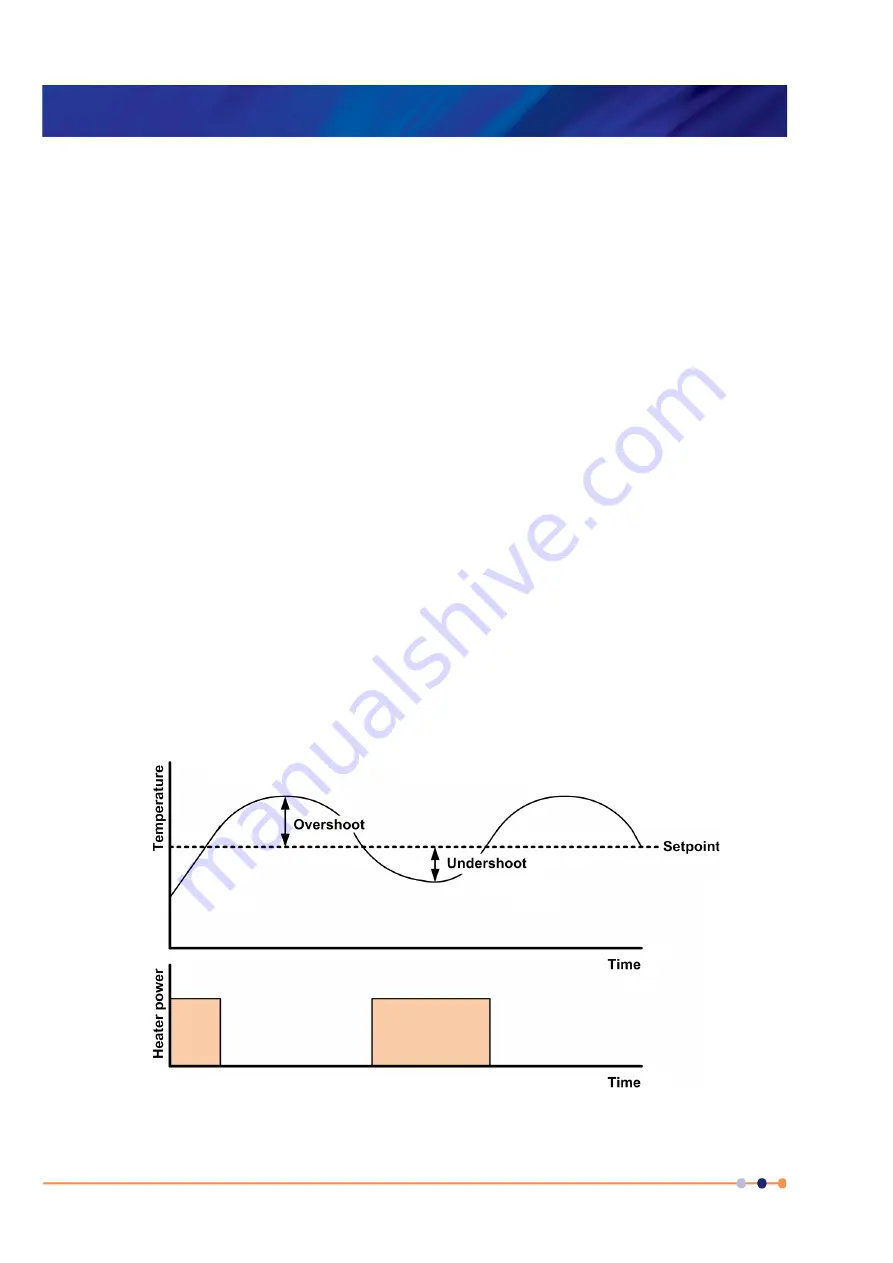
Handbook
November 2011
/
59-UMC0071
/
Issue
01
Mercury
iTC
Page 120
THEORY OF CONTROL LOOPS
Original Instructions
The criteria for good control are:
Control accuracy
The temperature of the sample must be as close as possible to the setpoint.
Control stability
Fluctuations above and below the setpoint temperature must be as small as possible.
Control response
The sample temperature must follow changes of setpoint as quickly as possible.
12.2.1
Open loop operation
In an open-loop system, a fixed heater power is applied and the system is allowed to
reach equilibrium. Any changes in the heat loss from the system produce corresponding
changes in the sample temperature. The system also takes a long time to reach
equilibrium. Open loop control is obtained by setting the
Heat
field on the
Control Loop
Configuration
page to
Manual
mode (see
An example of open-loop control is a hot-plate on a domestic oven.
12.2.2
On-Off control
In an on-off control system, the heater power is either maximum (if the measured
temperature is below the setpoint) or zero (if the measured temperature is above the
setpoint). The control accuracy and control response can be very good with this control
system. The system also responds to changes in heat loss from the sample.
Control stability is poor, since the sample temperature oscillates above and below the
setpoint. The magnitude of this oscillation depends on the thermal properties of the
system. This control system is an appropriate choice if the temperature oscillation it
produces can be tolerated.
An example of on-off control is a thermostat controlling the temperature of a room.
Figure 12-1
Response of an on-off control system






























